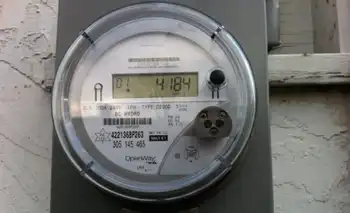Emissions plan to be presented at Whistler
By Whistler Printing & Publishing Ltd.
Protective Relay Training - Basic
Our customized live online or in‑person group training can be delivered to your staff at your location.

- Live Online
- 12 hours Instructor-led
- Group Training Available
“Two years ago, I was given data that Whistler Valley’s rising air contamination levels would lead to the point where low-activity warnings would be issued,” said Brian Barnett, the Resort Municipality Of Whistler’s (RMOW) general manager of engineering and public works.
“There is no way we can have that happen,” he said recently at meeting of the Association of Whistler Area Residents for the Environment (AWARE) at the Delta Whistler Resort. Barnett, Cora Hallsworth and two other people have been working on the project for the past two years. Hallsworth is the project manager of a Vancouver urban sustainability consulting company called The Sheltair Group.
Educating the public is vital to the plan’s success, Barnett said. “It’s going to take a lot of participation to achieve some of the results described (in the plan),” he said.
After the plan is presented to Council in mid March, Barnett said he hopes it will be adopted and the implementation process can begin.
Barnett is looking to develop a stakeholder group in which those from business and the wider community can start developing an education campaign.
In Whistler, more than 90 per cent of the air pollution comes from vehicle emissions from fossil fuels. Factors affecting air quality include fuel combustion, dust, vegetation, particulate matter and ozone.
“We haven’t experienced any problems with our airshed yet, but that will be the case with this trend continuing,” Barnett said.
“If we continue with business as usual, our greenhouse gases are expected to (rise) 44 per cent from 1990 to 2020,” he said. “So if we do nothing, things are going to get worse here.”
He wants to see Whistler take the initiative and manage its airshed, then try to convince other communities to do the same.
Hallsworth said past spikes in the levels of contaminants in WhistlerÂ’s airshed lead Hallsworth to believe that action is warranted.
“It’s much easier to keep our clean area clean than to go in and clean an area up,” she said.
Some of the measures the energy planÂ’s backers hope to achieve include a fuel switch from propane to natural gas, improvements to WhistlerÂ’s transportation strategy, public education, a switch to more efficient, low-impact electricity sources and a reduction in the level of greenhouse-gas emissions through solid waste reduction. Barnett would also like to see buildings made an average of 25 per cent more energy efficient.
An airshed isnÂ’t specific just to Whistler Valley, Hallsworth said. Because of the areaÂ’s climate and geography, particles will funnel into Whistler, Hallsworth said. She said emissions coming from Squamish can lead to Whistler having a higher ozone level than Squamish.
“It’s shocking to think, ‘Here I am, living in this clean-air, clean-water mountain community to find out our air quality is much worse than I thought,’ ” said Brad Kasselman, one of AWARE’s vice-presidents. “ So I was deeply disappointed… in the general reality that I’m not living in quite a pristine an environment as I once thought.”
He said BarnettÂ’s presentation was informative, and that AWARE plans to direct some of its energies to programs that can make the biggest differences.
“We’re going to have to educate our visitors at the end of the day. There’s no other way,” said AWARE member Eckhard Zeidler.
Zeidler said AWARE is pushing 2010 Olympic organizers hard on transportation issues. “If major car companies sponsoring the 2010 Olympics (aren’t) offering alternative-fuel vehicles or low-emission vehicles, AWARE will be publicly campaigning to shame them,” he said.











